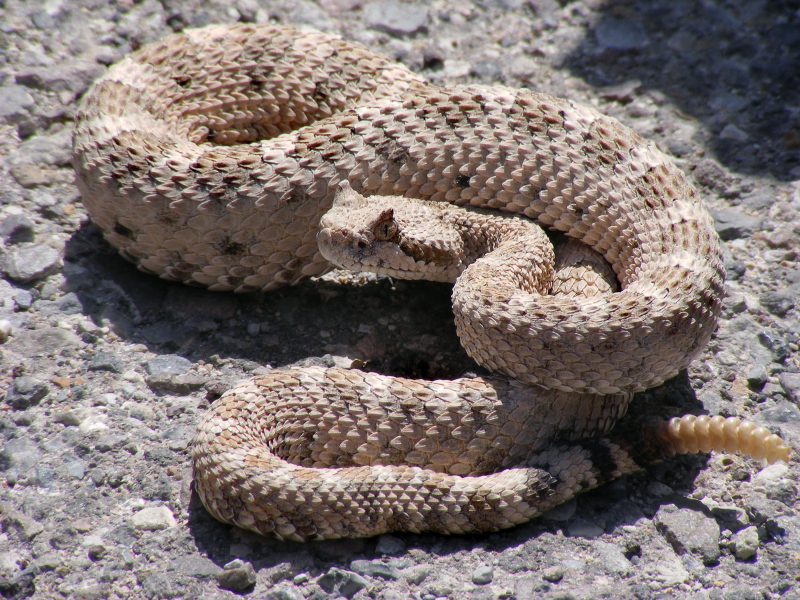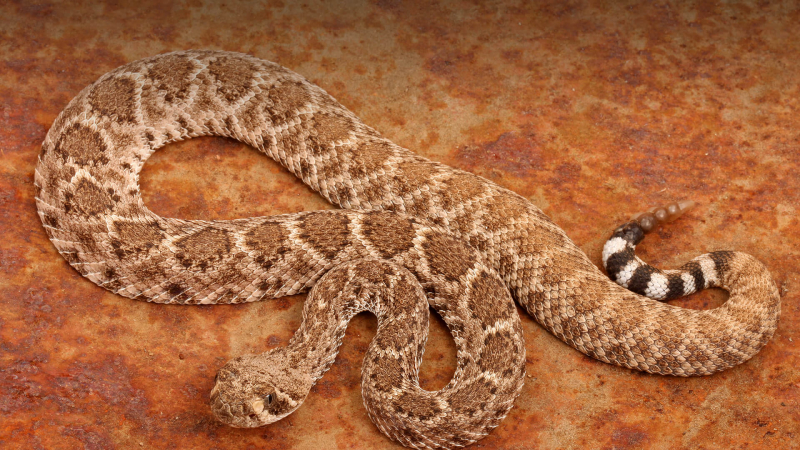Rattlesnake
Rattlesnakes get their name from the rattle at the end of their tails, which, when vibrated, generates a loud rattling noise that scares away predators or warns onlookers. Rattlesnakes are the main cause of snakebite injuries in North America, yet they hardly ever bite unless threatened or provoked, and if they are treated right after, bites from them are almost never deadly.
Hawks, weasels, king snakes, and a number of other animals all prey on rattlesnakes. When rattlesnakes are newborns, they are heavily preyed upon since they are still juvenile and frail. Rattlesnakes are killed by people in large numbers. Because of habitat loss, poaching, and extermination efforts, rattlesnake populations are seriously threatened in many places.
In California, rattlesnakes are common and many of them are dangerous. Around 800 rattlesnake bites are thought to result in one to two fatalities each year in California. The chances of survival are very good, but it's crucial to get help very away. The venom is hemotoxic, causing necrosis, coagulopathy, and tissue destruction. A presynaptic neurotoxic venom component is known as Mojave type A toxin is also present in the tiger rattlesnake and some species of the Mojave rattlesnake in the United States. This toxin can result in severe paralysis.










